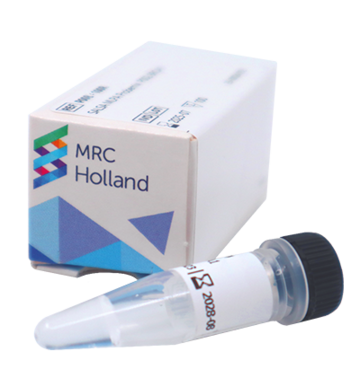The SALSA MLPA Probemix P169 Hirschsprung-1 is a research use only (RUO) assay for the detection of deletions or duplications in the RET, ZEB2, EDN3 and GDNF genes, which are associated with Hirschsprung disease (HSCR). HSCR or aganglionic megacolon, is a congenital disorder characterised by the absence of enteric ganglia along a variable length of the intestine. The disease can be classified according to the length of the aganglionosis into short segment (accounts for 80% of the HSCR cases), long segment and total colonic aganglionosis forms. Dominant mutations in the RET gene, as well as recessive mutations in several other genes including the ZEB2, EDN3, and GDNF genes, are associated with HSCR.
The RET gene encodes for one of the cell-surface receptor tyrosine kinases, which plays a role in cell growth and differentiation. RET is composed of 20 exons, spans ~53 kb of genomic DNA, and is located on 10q11.21, ~43 Mb from the p-telomere. The ZEB2 gene encodes for a member of the Zfh1 family and functions as a DNA-binding transcriptional repressor that interacts with activated SMADs (SMADs are the main signal transducers for receptors of the TGF-β superfamily). The EDN3 gene encodes for a member of the endothelin family. EDN3 consists of 5 exons, spans ~26 kb of genomic DNA, and is located on 20q13.32, ~59 Mb from the p-telomere. The GDNF gene encodes for a neurotrophic factor. GDNF consists of 3 exons, spans ~27 kb of genomic DNA and is located on 5p13.2, ~38 Mb from the p-telomere.
More information on HSCR is available at https://www.ncbi.nlm.nih.gov/books/NBK1439/.





